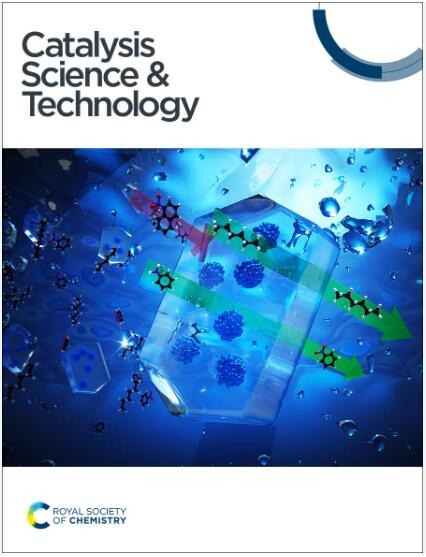用于甲醛氧化的高效非贵金属单原子催化剂 Fe1/Ti2CO2 的第一性原理研究
IF 4.4
3区 化学
Q2 CHEMISTRY, PHYSICAL
引用次数: 0
摘要
室内甲醛(HCHO)的去除对人类健康至关重要,尤其是在温和的条件下。在此,我们介绍一种新型非贵族单原子催化剂 Fe1/Ti2CO2,用于甲醛氧化。密度泛函理论研究了 Fe1/Ti2CO2 上 HCHO 的氧化机理。探讨了 Langmuir-Hinshelwood (LH) 机制和 Eley-Rideal (ER) 机制的 HCHO 氧化机制。给出了反应中所有可能的中间产物及其基本步骤的活化能。通过热力学和动力学分析,得出了 300 K 至 600 K 不同温度下的反应速率。在研究的温度范围内,甲醛氧化反应可以自发且不可逆地发生。最小活化能仅为 0.73 eV,而 CO2 和 H2O 的解离是内热反应,能量为 1.30 eV。这表明该催化剂具有广阔的实际应用前景。我们的工作有助于设计在温和条件下进行甲醛氧化的新型催化剂。本文章由计算机程序翻译,如有差异,请以英文原文为准。

First-principles investigation of an efficient non-noble single-atom catalyst Fe1/Ti2CO2 for formaldehyde oxidation
Indoor formaldehyde (HCHO) removal holds paramount significance for human health, particularly in mild conditions. Here, we introduce a new non-noble single-atom catalyst, Fe1/Ti2CO2, designed for formaldehyde oxidation. The oxidation mechanism of HCHO on Fe1/Ti2CO2 was studied by density functional theory. The HCHO oxidation mechanisms of the Langmuir–Hinshelwood (LH) mechanism and the Eley–Rideal (ER) mechanism were explored. The activation energies of all possible intermediates and their elementary steps in the reaction were given. Through thermodynamic and kinetic analysis, reaction rates at different temperatures ranging from 300 K to 600 K were obtained. In the temperature range studied, the reaction of formaldehyde oxidation can occur spontaneously and irreversibly. The minimum activation energy is only 0.73 eV, and the dissociation of CO2 and H2O is endothermic, with an energy of 1.30 eV. This indicates promising practical applications for the catalyst. Our work can assist in designing new catalysts for formaldehyde oxidation under mild conditions.
求助全文
通过发布文献求助,成功后即可免费获取论文全文。
去求助
来源期刊

Catalysis Science & Technology
CHEMISTRY, PHYSICAL-
CiteScore
8.70
自引率
6.00%
发文量
587
审稿时长
1.5 months
期刊介绍:
A multidisciplinary journal focusing on cutting edge research across all fundamental science and technological aspects of catalysis.
Editor-in-chief: Bert Weckhuysen
Impact factor: 5.0
Time to first decision (peer reviewed only): 31 days
 求助内容:
求助内容: 应助结果提醒方式:
应助结果提醒方式:


